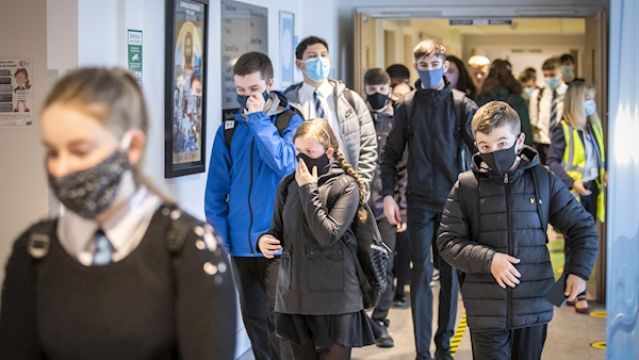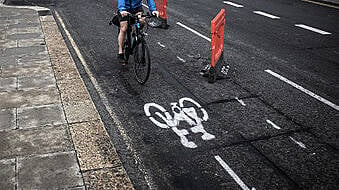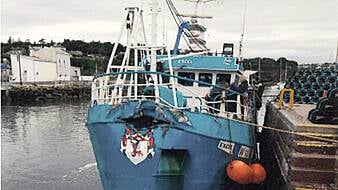Details of the Government’s new plan to deal with Covid-19 have begun to emerge as billions are set to be spent on healthcare costs over the coming months.
As the Government announced new measures in August designed to curb the spread of the virus, it also revealed work was underway on a plan laying out how the country would “live” with it in the mid-term.
The framework for the next six months will be published tomorrow, and will replace the roadmap for reopening which came to an end in August.
Alert levels
The new plan is expected to include five levels of alert with corresponding restrictions to reflect the level at which the virus is circulating.
Each individual county is set to be assigned a level depending on the level of Covid-19 present in the region.
Level Five is expected to represent an emergency situation similar to that faced in March.
On the plan’s publication next week, the entire State is expected to be placed on Level Two status, the second most benign of the five levels, according to the Irish Times.
This is despite confirmed cases of Covid-19 continuing to rise in the capital, with 156 of yesterday's 255 cases recorded in the capital.
The new cases confirmed in Dublin come after acting chief medical officer Dr Ronan Glynn warned it is a "critical moment" in addressing the spread of Covid-19 in the capital.
Dr Glynn said individual choices would make “all the difference” in the coming weeks: “For the people of Dublin in particular, this is a critical moment to address the spread of the disease in the community.
“Individual choices can make all the difference - reconsider your plans for the weekend, reduce the number of people that you meet and avoid social activities that involve large groups of people.
"Covid-19 is a highly infectious disease that can spread even when you have no symptoms. Remember, when you do meet with friends, family and colleagues, staying two metres apart is the best way to keep everyone safe.”
Gardaí have announced additional high visibility patrols in Dublin to help in supporting public health guidelines, particularly in relation to social distancing and gathering in large groups.
Dr Colm Henry, a member of the National Public Health Emergency Team (NPHET), has said there is no appetite to recommend a localised lockdown in Dublin and that other methods to reverse the upwards trend of the virus will be looked at first, such as reducing interactions between households.
Office returns
The Government is expected to encourage businesses to bring employees back to offices in areas that have been devastated economically by Covid-19 under the new plan.
Ian Talbot from Chambers Ireland said a safe return must be ensured: “Businesses need a safe return to work.
"Obviously we have a situation where many of our town centres without offices running to capacity are really suffering. We do need to see people get back to work, but we need to see them get back to work safely.”
International Travel
The Government is also expected to adopt an EU colour-coded proposal for common travel which favours testing over quarantine, put forward earlier this month.
The European Commission has proposed this common colour code system be based on incidence rates of the virus within countries, provided to the European Centre for Disease Prevention and Control (ECDC), and that it be updated weekly.
Areas will be designated a particular colour as follows:
- Green for an area where the total number of newly notified Covid-19 cases is less than 25 per 100,000 during a 14-day period and the percentage of positive tests from all COVID-19 tests is less than 3 per cent.
- Orange for an area where the total number of newly notified cases is less than 50 per 100,000 during a 14-day period but the percentage of positive tests is 3 per cent or more OR the total number of newly notified cases is between 25 and 150 but the percentage of positive tests is less than per cent.
- Red for an area where the total number of newly notified cases is more than 50 per 100,000 during a 14-day period and the percentage of positive tests is 3 per cent or more OR the total number of newly notified cases is more than 150 per 100,000 people during a 14-day period.
- Grey if there is insufficient information available to assess the criteria proposed by the Commission or the number of Covid-19 tests carried out per 100,000 people is less than 250.
The Commission has proposed a common approach among member states when dealing with travellers coming from “high-risk” zones. It has suggested that entry should not be refused to arrivals from other member states but quarantine periods or Covid-19 testing after arrival could be implemented.
Ryanair expects the European Commission this week to unveil a new system of Covid-19 travel advice that will open up most regions of the continent to travel without quarantine, Chief Executive Eddie Wilson said on Monday.
The European Commission earlier this month proposed a common traffic light system for EU member states to coordinate border controls and remedy the current, confusing patchwork of coronavirus restrictions on travellers across Europe.
"I think you'll see the vast majority of Europe and UK returned into a green zone and then it'll be up to the individual health authorities to follow up on track and tracing them," Wilson told Ireland's RTE radio.
Sporting events
Up to 5,000 people could be allowed attend sporting events in Croke Park and the Aviva Stadium, with capacity capped at 500 for smaller venues.
Labour Spokesperson on Sport, Senator Mark Wall, said: “Prior to the additional restrictions introduced on August 18th, up to 200 people were allowed attend outdoor sporting events, which allowed 50 to 120 spectators to attend GAA and soccer matches.
“The Government need to move to allow 200 people attend sporting events particularly in large stadiums and in parts of the country with a low incidence of Covid-19.
“Sport plays an important part in communities around the country particularly in rural communities and the simple pleasure of being able to attend a club match as a spectator will mean an awful lot especially for elderly people for whom it may be their only social outlet.”
Healthcare bill
Under the new plan, health services for the winter are expected to cost in the region of €600 million, according to the Irish Times.
The paper reports that the State is facing additional health costs of more than €3 billion to deal with the impact of Covid-19 into next year, while the cost of a revised testing and tracing system has been forecast at between €900 million and €1 billion.
The bill for personal protective equipment in the last quarter of 2020 and over the course of 2021 is likely to reach €1.5 billion.







